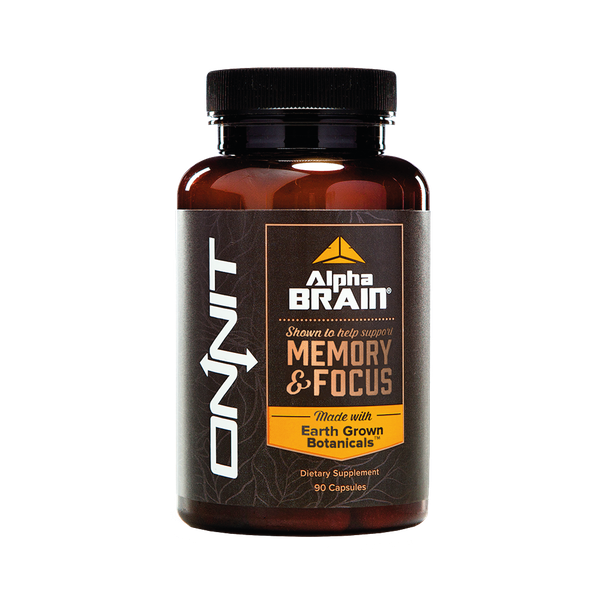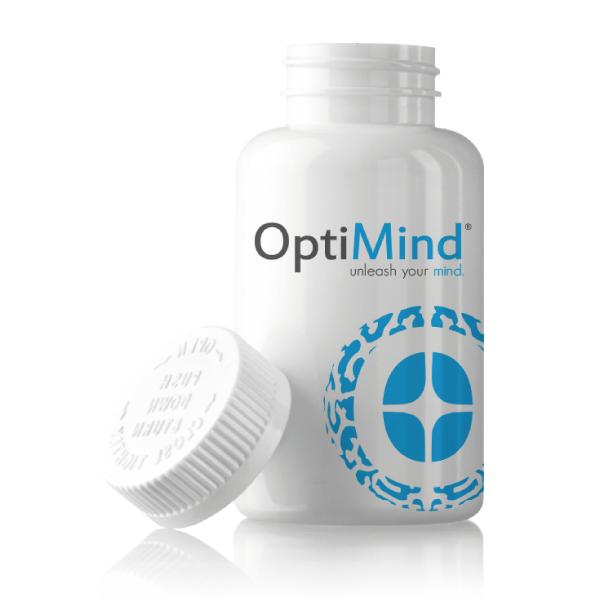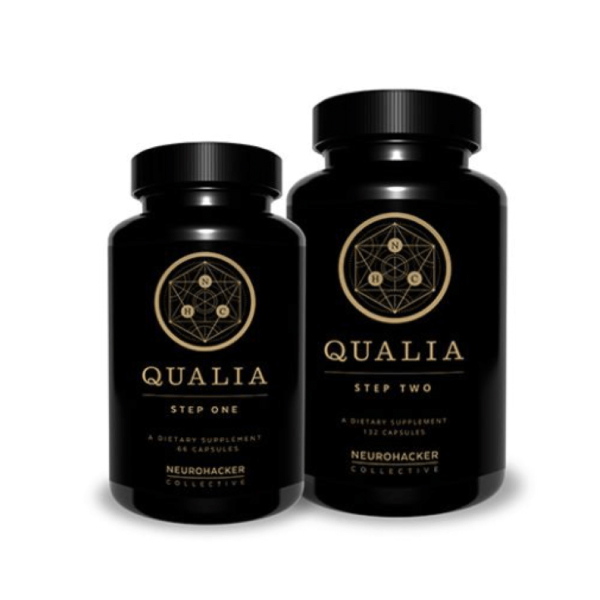Phosphatidylserine Summary
Phosphatidylserine is naturally produced in the human brain. It's a fat-like substance that forms the lipid bilayer of the neuron cell. When integrated into the cell membrane, it is believed to contribute to the cell fluidity and positively impact Na+/K+ATPase activity and decrease acetylcholinesterase. Both of which are commonly targeted actions of many nootropic formulations.
Although not necessary to supplement, due to the brain's natural ability to produce this chemical, supplementation has been shown to increase cognitive function and memory overall. Especially in older patients. Phosphatidylserine levels have been shown to decline with age [3]. It is mainly used in nootropic formulations aimed at preventing cognitive decline with age, and taken in 3 doses of 100 mg each.
Where Does It Come From?
Phosphatidylserine is naturally produced in the human body, and can also be obtained from the diet.
In the human body, phosphatidylserine can be found in the brain, lungs, testes, kidneys, liver, skeletal tissue, heart, and blood plasma. [1].
In the diet, phosphatidylserine can be found in foods like soy lecithin, krill oil, and neural tissue of animals (not recommended for consumption). It is estimated that dietary intake of phosphatidylserine is around 130 mg/day on average. [2].
General Actions:
- Reduces ADHD Symptoms
- Improves Concentration
- Reduces The Effects Of Stress
- Antiacetylcholinesterase
- Increases memory and learning capacity
Specific Actions:
Acetylcholinesterase downregulation
Na+/K+/ATPase upregulation
Increases cell fluidity
Indications:
Preventative and treatment for Alzheimer's disease
To improve memory and learning capacity
ADHD
Age-related cognitive decline
Dosage
100 - 500 mg/day
This daily dosage is generally broken up into 3-4 smaller doses of 100 mg.
Order Some NowChemical Description:
Phosphatidylserine is similar in structure to triglycerides, only with 2 spots on the glycerol backbone occupied by fatty acids, while the third spot contains a phosphatidic acid molecule and serine amino acid.
Many different compounds go under this name as long as they have one serine group. The fatty acid portions will vary significantly.
Pharmacology And Medical Research:
+ Acetylcholinesterase Downregulation
Cell membranes that contain phosphatidylserine have been correlated with a downregulation of acetylcholinesterase activity [4]. This contributes to an increase in acetylcholine levels in the brain.
This has been backed up in several studies showing a marked increase in acetylcholine levels in aged rat brains [10 - 12].
+ ADHD And Concentration
A study investigating the effectiveness of phosphatidylserine gave 36 children (aged 4-14) either a placebo or 200 mg of phosphatidylserine for 2 months. The results were significant improvements in ADHD symptoms and short-term auditory memory. No adverse effects were noted in this study. [7].
In healthy adults, 2 weeks of 400 mg doses of phosphatidylserine were shown to increase the processing speed (20% improvement), and cognitive accuracy (13% improvement of incorrect responses) [8].
+ Alzheimer's Disease
Phosphatidylserine supplementation in doses ranging from 200 - 500 mg was shown to improve glucose metabolism by 13.5-16%, increase dopamine and serotonin metabolites in patients with Alzheimer's disease [13-17].
Additionally, doses ranging from 15-50 mg/kg of phosphatidylserine were shown to reduce the rate of cognitive decline in aging rats [18].
+ Memory
In rat studies, phosphatidylserine was shown to improve the memory and learning ability at a dose of 50 mg/kg. This was tested using several different studies including light-avoidance, open-field and Y mazes, as well as avoidance tests. [20].
+ Na+/K+/ATPase Activity Upregulation
Phosphatidylserine activates protein kinase C (PKC) and has been correlated with an upregulation in Na+/K+/ATPase activity [4-6].
+ Parkinson's Disease
Double-blind studies have shown marked improvements in EEG parameters for patients with Parkinson's disease after taking bovine phosphatidylserine [19].
Toxicity
Doses as high as 600 mg phosphatidylserine for 12 weeks have been shown to have no noticeable side effects in elderly patients [21].
Bovine sourced phosphatidylserine supplementation is not recommended as it can increase chances for contracting Creutzfeldt–Jakob Disease. Soy-based products are recommended.
Synergy:
Improvements in ADHD symptoms and concentration improvements were noted to be higher in fish oil containing supplements than alone. This included both versions of phosphatidylserine with the fish oil fatty acid components, and a combination of phosphatidylserine and fish oil supplements separately. [9].
Nootropic Formulas Containing Phosphatidylserine:
Recent Blog Posts:
References:
Folch, J. (1942). Brain cephalin, a mixture of phosphatides. Separation from it of phosphatidyl serine, phosphatidyl ethanolamine, and a fraction containing an inositol phosphatide. Journal of Biological Chemistry, 146(1), 35-44.
Jäger, R., Purpura, M., & Kingsley, M. (2007). Phospholipids and sports performance. Journal of the International Society of Sports Nutrition, 4(1), 5.Chicago
Calderini, G., Bonetti, A. C., Battistella, A., Timm Crews, F., & Toffano, G. (1983). Biochemical changes of rat brain membranes with aging. Neurochemical research, 8(4), 483-492.
Tsakiris, S., & Deliconstantinos, G. (1984). Influence of phosphatidylserine on (Na++ K+)-stimulated ATPase and acetylcholinesterase activities of dog brain synaptosomal plasma membranes. Biochemical Journal, 220(1), 301-307.
Kaibuchi, K., Takai, Y., & Nishizuka, Y. (1981). Cooperative roles of various membrane phospholipids in the activation of calcium-activated, phospholipid-dependent protein kinase. Journal of biological Chemistry, 256(14), 7146-7149.
Specht, S. C., & Robinson, J. D. (1973). Stimulation of the (Na++ K+)-dependent adenosine triphosphatase by amino acids and phosphatidylserine: chelation of trace metal inhibitors. Archives of biochemistry and biophysics, 154(1), 314-323.
Hirayama, S., Terasawa, K., Rabeler, R., Hirayama, T., Inoue, T., Tatsumi, Y., ... & Jäger, R. (2014). The effect of phosphatidylserine administration on memory and symptoms of attention‐deficit hyperactivity disorder: a randomised, double‐blind, placebo‐controlled clinical trial. Journal of Human Nutrition and Dietetics, 27(s2), 284-291.
Parker, A. G., Gordon, J., Thornton, A., Byars, A., Lubker, J., Bartlett, M., ... & Greenwood, M. (2011). The effects of IQPLUS Focus on cognitive function, mood and endocrine response before and following acute exercise. Journal of the International Society of Sports Nutrition, 8(1), 16.
Vaisman, N., Kaysar, N., Zaruk-Adasha, Y., Pelled, D., Brichon, G., Zwingelstein, G., & Bodennec, J. (2008). Correlation between changes in blood fatty acid composition and visual sustained attention performance in children with inattention: effect of dietary n− 3 fatty acids containing phospholipids. The American journal of clinical nutrition, 87(5), 1170-1180.
Pedata, F., Giovannelli, L., Spignoli, G., Giovannini, M. G., & Pepeu, G. (1986). Phosphatidylserine increases acetylcholine release from cortical slices in aged rats. Neurobiology of aging, 6(4), 337-339.
Casamenti, F., Mantovani, P., Amaducci, L., & Pepeu, G. (1979). Effect of phosphatidylserine on acetylcholine output from the cerebral cortex of the rat. Journal of neurochemistry, 32(2), 529-533.
Casamenti, F., Scali, C., & Pepeu, G. (1991). Phospatidylserine reverses the age-dependent decrease in cortical acetylcholine release: a microdialysis study. European journal of pharmacology, 194(1), 11-16.
Argentiero, V., & Tavolato, B. (1980). Dopamine (DA) and serotonin metabolic levels in the cerebrospinal fluid (CSF) in Alzheimer's presenile dementia under basic conditions and after stimulation with cerebral cortex phospholipids (BC-PL). Journal of neurology, 224(1), 53-58.
Klinkhammer, P., Szelies, B., & Heiss, W. D. (1990). Effect of phosphatidylserine on cerebral glucose metabolism in Alzheimer's disease. Dementia and Geriatric Cognitive Disorders, 1(4), 197-201.
Amaducci, L. (1988). Phosphatidylserine in the treatment of Alzheimer's disease: results of a multicenter study. Psychopharmacology Bulletin, 24(1), 130.
Engel, R. R., Satzger, W., Günther, W., Kathmann, N., Bove, D., Gerke, S., ... & Hippius, H. (1992). Double-blind cross-over study of phosphatidylserine vs. placebo in patients with early dementia of the Alzheimer type. European Neuropsychopharmacology, 2(2), 149-155.
Calderini, G., Aporti, F., Bellini, F., Bonetti, A. C., Teolato, S., Zanotti, A., & Toffano, G. (1985). Pharmacological Effect of Phosphatidylserine on Age‐Dependent Memory Dysfunction. Annals of the New York Academy of Sciences, 444(1), 504-506.
Fünfgeld, E. W., Baggen, M., Nedwidek, P., Richstein, B., & Mistlberger, G. (1988). Double-blind study with phosphatidylserine (PS) in parkinsonian patients with senile dementia of Alzheimer's type (SDAT). Progress in clinical and biological research, 317, 1235-1246.
Kataoka-Kato, A., Ukai, M., Sakai, M., Kudo, S., & Kameyama, T. (2005). Enhanced learning of normal adult rodents by repeated oral administration of soybean transphosphatidylated phosphatidylserine. Journal of pharmacological sciences, 98(3), 307-314.
Jorissen, B. L., Brouns, F., Van Boxtel, M. P. J., & Riedel, W. J. (2002). Safety of soy-derived phosphatidylserine in elderly people. Nutritional neuroscience, 5(5), 337-343.
Cenacchi, T., Bertoldin, T., Farina, C., Fiori, M. G., Crepaldi, G., Azzini, C. F., ... & Belloni, G. (1993). Cognitive decline in the elderly: a double-blind, placebo-controlled multicenter study on efficacy of phosphatidylserine administration. Aging Clinical and Experimental Research, 5(2), 123-133.
Chang, C. Y., Ke, D. S., & Chen, J. Y. (2009). Essential fatty acids and human brain. Acta Neurol Taiwan, 18(4), 231-41.
Das, U. N. (2006). Essential fatty acids-a review. Current pharmaceutical biotechnology, 7(6), 467-482.
Crook, T. H., Tinklenberg, J., Yesavage, J., Petrie, W., Nunzi, M. G., & Massari, D. C. (1991). Effects of phosphatidylserine in age‐associated memory impairment. Neurology, 41(5), 644-649.
Vermes, I., Haanen, C., Steffens-Nakken, H., & Reutellingsperger, C. (1995). A novel assay for apoptosis flow cytometric detection of phosphatidylserine expression on early apoptotic cells using fluorescein labelled annexin V. Journal of immunological methods, 184(1), 39-51.
Kato-Kataoka, A., Sakai, M., Ebina, R., Nonaka, C., Asano, T., & Miyamori, T. (2010). Soybean-derived phosphatidylserine improves memory function of the elderly Japanese subjects with memory complaints. Journal of clinical biochemistry and nutrition, 47(3), 246-255.
Hirayama, S., Terasawa, K., Rabeler, R., Hirayama, T., Inoue, T., Tatsumi, Y., ... & Jäger, R. (2014). The effect of phosphatidylserine administration on memory and symptoms of attention‐deficit hyperactivity disorder: a randomised, double‐blind, placebo‐controlled clinical trial. Journal of human nutrition and dietetics, 27, 284-291.
Chung, S. Y., Moriyama, T., Uezu, E., Uezu, K., Hirata, R., Yohena, N., ... & Yamamoto, S. (1995). Administration of phosphatidylcholine increases brain acetylcholine concentration and improves memory in mice with dementia. The Journal of nutrition, 125(6), 1484-1489.
Nightingale, S., Woo, E., Smith, A. D., French, J. M., Gale, M. M., Sinclair, H. M., ... & Shaw, D. A. (1990). Red blood cell and adipose tissue fatty acids in mild inactive multiple sclerosis. Acta Neurologica Scandinavica, 82(1), 43-50.
Morris, M. C., Evans, D. A., Bienias, J. L., Tangney, C. C., Bennett, D. A., Wilson, R. S., ... & Schneider, J. (2003). Consumption of fish and n-3 fatty acids and risk of incident Alzheimer disease. Archives of neurology, 60(7), 940-946.
Lukiw, W. J., & Bazan, N. G. (2008). Docosahexaenoic acid and the ageing brain. The Journal of nutrition, 138(12), 2510-2514.
Hellhammer, J., Hero, T., Franz, N., Contreras, C., & Schubert, M. (2012). Omega-3 fatty acids administered in phosphatidylserine improved certain aspects of high chronic stress in men. Nutrition research, 32(4), 241-250.
Pedata, F., Giovannelli, L., Spignoli, G., Giovannini, M. G., & Pepeu, G. (1985). Phosphatidylserine increases acetylcholine release from cortical slices in aged rats. Neurobiology of aging, 6(4), 337-339.
Mulder, C., Wahlund, L. O., Teerlink, T., Blomberg, M., Veerhuis, R., Van Kamp, G. J., ... & Scheffer, P. G. (2003). Decreased lysophosphatidylcholine/phosphatidylcholine ratio in cerebrospinal fluid in Alzheimer’s disease. Journal of neural transmission, 110(8), 949-955.
Schwarz, E., Prabakaran, S., Whitfield, P., Major, H., Leweke, F. M., Koethe, D., ... & Bahn, S. (2008). High throughput lipidomic profiling of schizophrenia and bipolar disorder brain tissue reveals alterations of free fatty acids, phosphatidylcholines, and ceramides. Journal of proteome research, 7(10), 4266-4277.










As COVID-19 continues to spread around the world, we’re getting a lot of questions on what the potential role of herbal medicine is during the outbreak. Learn how the virus works and how to limit your chances of transmission.